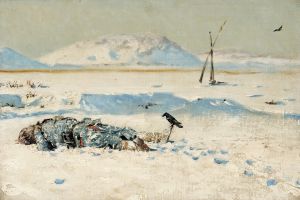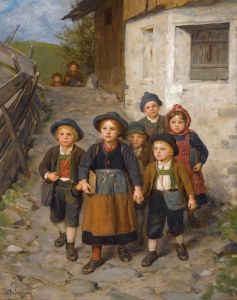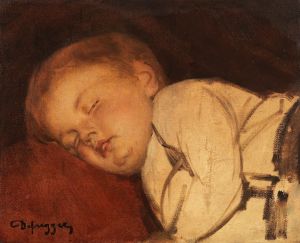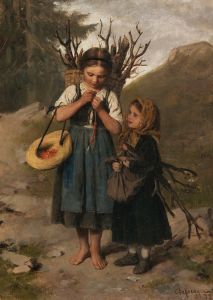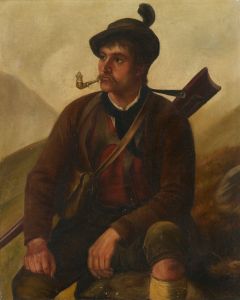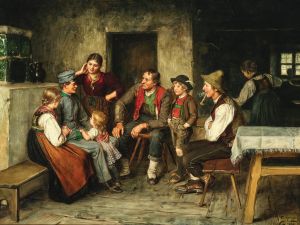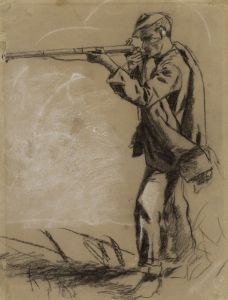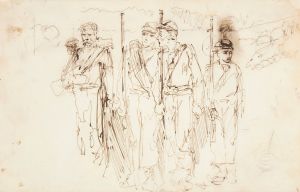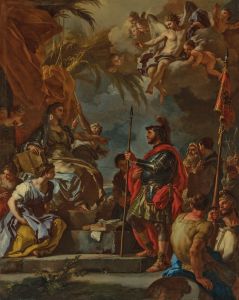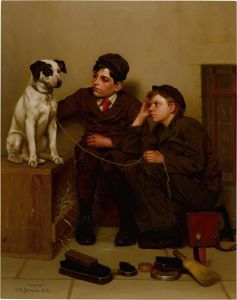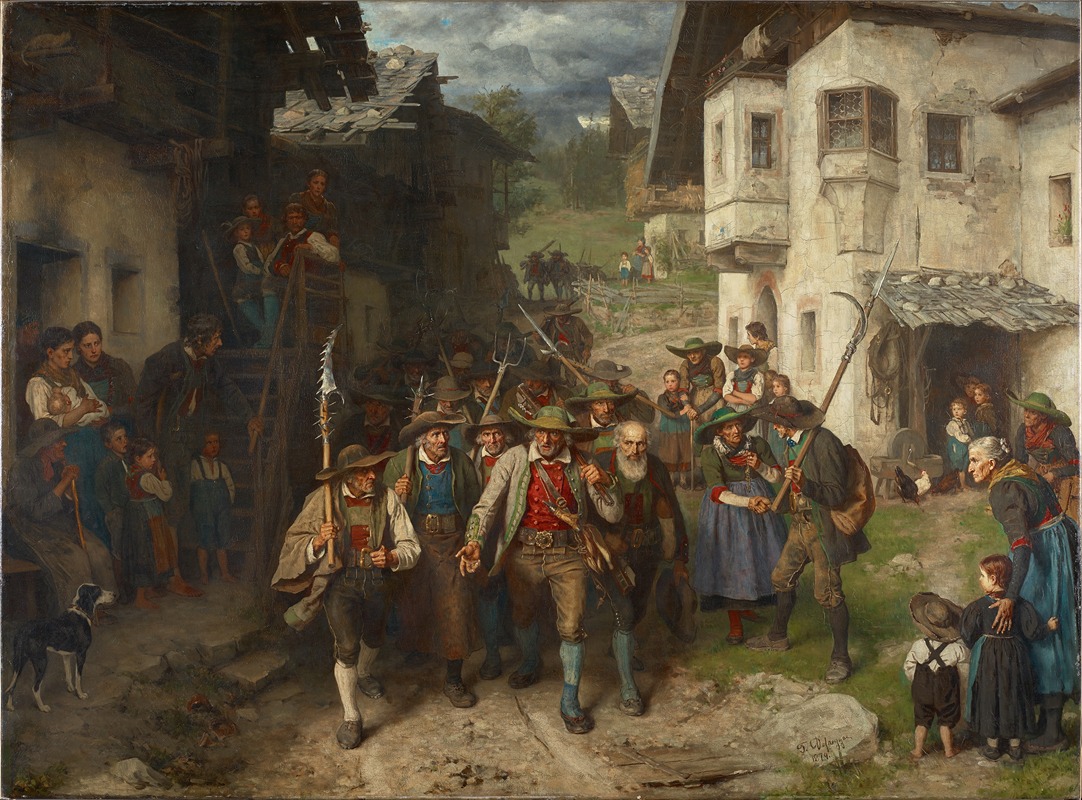
Das letzte Aufgebot
A hand-painted replica of Franz von Defregger’s masterpiece Das letzte Aufgebot, meticulously crafted by professional artists to capture the true essence of the original. Each piece is created with museum-quality canvas and rare mineral pigments, carefully painted by experienced artists with delicate brushstrokes and rich, layered colors to perfectly recreate the texture of the original artwork. Unlike machine-printed reproductions, this hand-painted version brings the painting to life, infused with the artist’s emotions and skill in every stroke. Whether for personal collection or home decoration, it instantly elevates the artistic atmosphere of any space.
Franz von Defregger's painting Das letzte Aufgebot (translated as "The Last Levy" or "The Last Reserves") is a notable work by the Austrian artist, created in 1874. Defregger, a prominent figure in 19th-century European art, was known for his depictions of Tyrolean peasant life and historical scenes, often focusing on themes of patriotism and resistance. This painting is one of his most recognized works and reflects his interest in the Tyrolean Rebellion of 1809, a significant historical event in Austrian history.
The painting portrays a poignant moment during the Tyrolean uprising against Napoleonic forces and their Bavarian allies. The rebellion, led by Andreas Hofer, was a grassroots movement in the Tyrol region (now part of modern Austria and northern Italy) aimed at resisting foreign domination and preserving local autonomy. Das letzte Aufgebot captures the emotional and human aspects of this struggle by focusing on a group of ordinary Tyrolean villagers preparing to defend their homeland.
In the composition, Defregger depicts a diverse group of individuals, including elderly men, women, and young boys, symbolizing the desperate mobilization of all available people to resist the invading forces. The figures are dressed in traditional Tyrolean attire, emphasizing their cultural identity and connection to the land. The expressions on their faces convey a mix of determination, sorrow, and resignation, highlighting the gravity of their situation. The painting's title, "The Last Levy," underscores the idea that these individuals represent the final line of defense, called upon when all other options have been exhausted.
Defregger's work is characterized by its attention to detail and emotional depth. In Das letzte Aufgebot, he employs a realistic style to bring the scene to life, using light and shadow to create a dramatic atmosphere. The setting, likely a rural village, is rendered with care, providing a sense of place and grounding the figures in their environment.
The painting was well-received in its time and contributed to Defregger's reputation as a master of historical genre painting. It resonated with audiences for its patriotic themes and its ability to evoke empathy for the struggles of ordinary people. Today, Das letzte Aufgebot is considered an important example of 19th-century Austrian art and a testament to Defregger's skill as a storyteller through visual art.
The painting is housed in the Neue Pinakothek in Munich, Germany, where it remains a significant piece in the museum's collection. It continues to be studied and appreciated for its historical and artistic value, offering insight into both the Tyrolean Rebellion and the broader cultural context of 19th-century Europe.





